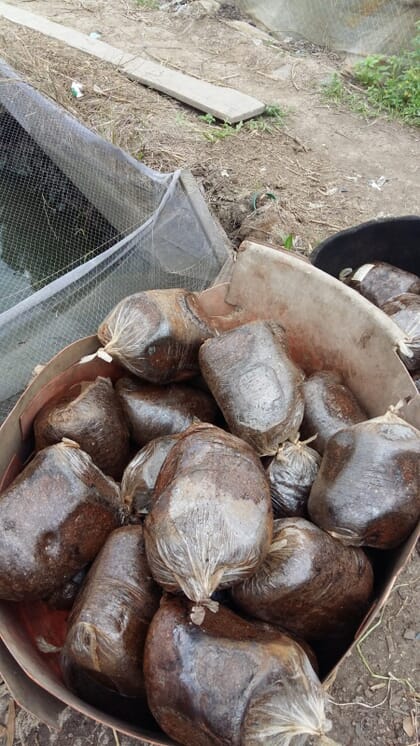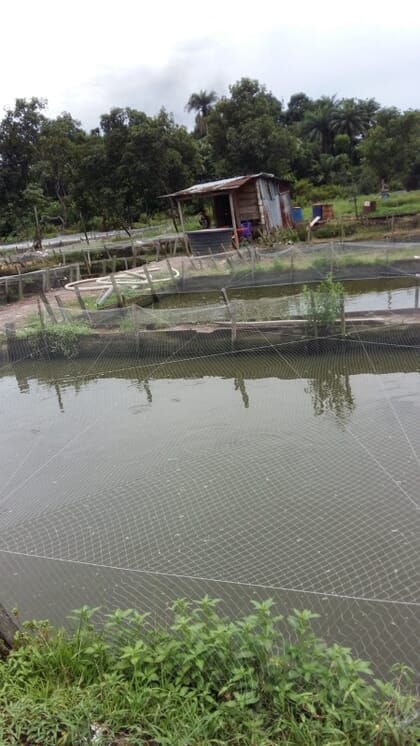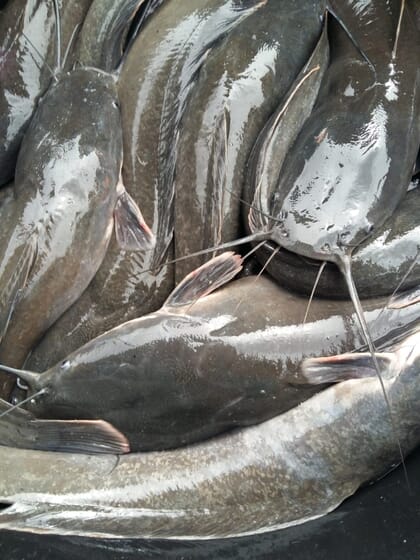The following tips on how to make your farm profitable are based on my personal experience as a catfish farmer, with input from other successful producers in Warri Delta State.
Feed
Feed constitutes the most important cost in catfish production. Nigeria still imports feeds, but these are becoming extremely hard for local farmers to afford, due to the high cost of logistics involved in bringing them into the country, as well as the increasing depreciation of the naira against the dollar. Farmers who depend on imported feeds end up incurring so much cost that their profit margin is minimised.

As a result I use self-formulated feeds, sourced from local materials, particularly once the fish are two months old and start consuming more, and this has drastically reduced my cost of production. A combination of cassava floor, maize or wheat (25kg), 72 percent fish meal (25kg), soya bean or sunflower or maggot meal (30kg), 20kg groundnut cake (GNC), Fish premix (0.5kg), methionine (0.1kg), vitamin C (0.1kg), lysine (0.1kg) and table salt (0.2kg), bonemeal (1kg) mixed with blood meal at the right quantity can make a good healthy local feed at a much cheaper rate, compared to the branded ones.
After mixing them together, you can tie them into small nylon bags and cook in a very low heat or bake in the sun, before cutting into the sizes you want.
Feeding
Feeding is the most important work in catfish farming. It requires both skill and time to get right. The key skill required is knowing the amount of feed required, without wasting any. You can feed according to the biomass of the pond or by the weight of the individual fish, but this application can be very demanding for large commercial farms with so many ponds and fish to feed. It is advised to always use experienced people to carry out feeding. Also, manual feeding is recommended to ensure a more equal distribution of food.
Fish health and water quality

I always try to maintain a healthy pond environment, because it’s easier and cheaper to manage a safe environment than to manage a disease outbreak. Fish grow better, reproduce more effectively and have a higher survival rate if the water quality is good and the pond is not overcrowded. Also, a flow-through water system is best recommended in keeping a clean and quality water. I always ensure that my ponds maintain a pH value between 6.5 and 9.0. If the pH goes below 6.5 and total alkalinity and hardness below 10 ppm, I apply limestone to the ponds. I always check the dissolved oxygen and impurities. A successful farm requires a dissolved oxygen concentrations of 5 ppm or higher. When you maintain a healthy breeding environment, your fish develops stronger immune systems, that can fight or withstand some minor disease exposures and stress. Maintaining fish health and water quality are vital to be profitable.
Genetic selection
It’s important to stock catfish that grow faster and convert feed more efficiently. Knowing the right genetic to select from goes a long way in the fish growth. Crossing channel catfish females with blue catfish males creates a hybrid strain that has been shown to be more profitable, with more desirable traits including their ability to adapt to high stocking densities, resisting handling and stress, tolerating poor water quality, and growing faster to reach market size. This hybrid is also known to eat different kinds of food, such as aquatic weeds and insects, other small fish and snails, making it easier to feed. Most successful fish farmers from the United Ufuoma Fish Farmers Association (UUFFA), in Warri Delta State, grow mostly hybrid catfish because of their high rate of growth and rapid maturation.

According to Pastor Christ who is a both experienced and successful farmer, believes that feeding the fish well, can get them up to 3kg to 4kg per fish weight within six months, and these grants a very good returns. You also need to ensure that the fish seed supplies come from good and reliable sources – those that use mature broodstock for breeding. Some farmers prefer buying cheap fingerlings. However, at the end of the day, you discover that the quality of the fingerlings isn’t good enough, resulting in stunted growth and high mortality rates of the fish.
“I always target a weight of up to 3-5kg per fish to make a good profit, as we sell by the kilo,” says Chief Joshua Ughere, who has been a farmer for more than 15 years. “Before I stock my ponds, I must ensure that my pond is adequately prepared. After pumping in water into the pond, I add a limestone to control the acidity of the water and leave it for four days. I then fertilise the pond with poultry droppings or fertilisers to enable growth of planktonic algae that increases the natural food organisms, which serve as supplementary feeds and source of oxygen to my fish.”
“After pond fertilisation, I leave it for up to seven days, to enable the algae to grow, after which I pump out the water to reduce turbidity and avoid harmful algal blooms. I then allow a more natural clean-water to surface or pump in clean water to the pond. I check the pH value before introducing my fingerlings or post-fingerlings.
“I feed my fish three times daily – morning, afternoon and night – in the first three weeks of introducing them to the ponds. After the third week, I reduce this to twice a day – morning and evening. But I ensure I feed them well, and with feed rich in protein content. I prefer to use floating fish pellets, because it lets me see how the fish are responding to feeding, so I know when to stop”.
Harvest
Before I harvest at six months, I always ensure that I have an already market to sell my product. If not, I will have to continue feeding, and the feeding would generate more cost. I don’t sell to wholesalers. Wholesalers mostly pay quarterly, so I don’t use them. I supply my fish directly to the users and consumers, because that is where I make more profit and recover my money instantly. I target hotels and restaurants. I smoke the remainder, package them well and supply to offices, households- both nationwide and abroad, using courier services. The smoked fish doubles my profit.




